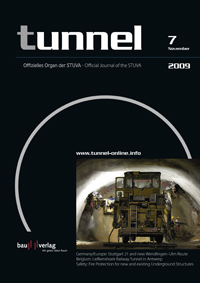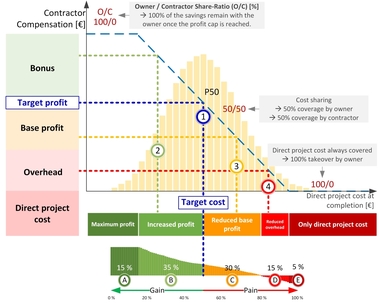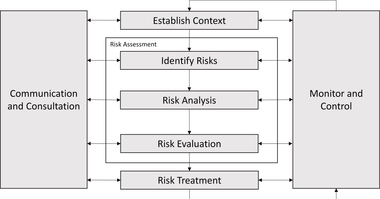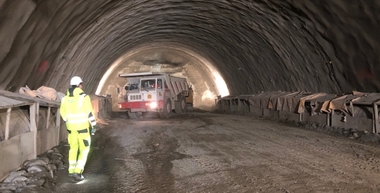Risk Management in Tunnelling
In order to be in a position to cope with risks in tunnelling a high degree of transparency is required. Process management represents a suitable tool towards this end.
Tunnelling as a very special and sophisticated branch of the engineering sciences is characterised by high risks during project execution. In particular tunnelling in residential areas involves especially high risks – the consequences of accidents have drastic eff ects on local residents and buildings in the areas
concerned.
Risk Management System and internal Control System
Until 2008 it was “only” necessary to set up an appropriate risk management system (RMS) relating to the “risks governing assets” on the company’s fi nancial sector. However, since 2009 it is required by law to establish an eff ective RSM that can be shown to have the capacity to function properly, which among other things also covers the complete compilation of services in the field of operative project risks. Furthermore what is known as an internal control system (ICS) has been introduced by law as an integral component of the RSM, which is committed to monitoring, controlling and documenting RMS activities.
Effects of Process Management
The considerably increased legal requirements that have been described inevitably lead to greater significance for project phase oriented process management during the submission and execution phase for companies engaged in building and tunnelling. It can only be established through subsequent controlling (ICS) based on detailed processes, relating to what has to be undertaken in conjunction with a particular defined set of circumstances, whether the planned parameter has been complied with regarding content and time as required.
To think beyond the box and look at the IT industry’s project business or at classical development projects shows that thanks to process management the transparency and quality for dealing with a project was substantially enhanced and will indeed continue to be. The aim is by means of defined sequences, standards and tools to ensure that the success of the project is as little infl uenced as possibleby individual activities of a personal nature on the construction site.
Consequences for Tunnelling
For example should disturbances and/or alterations crop up during the project execution phase aff ecting the planned construction sequences or the construction circumstances in tunnelling owing to project-related violation of obligations or directives issued by the client, the responsible contractors find themselves exposed to a large number of time-related and monetary risks. These have to be dealt with eff ectively and demonstrably based on the abovementioned legal requirements. Seen from the internal point-of-view these risks relate to a possible loss of the right to claim for additional services owing to hindrances and extended construction times. Seen externally these risks apply to the possibility on the part of the client to successfully claim for compensation in the event of wrong behaviour and mismanagement on account of violation of duty. These claims on the part of the
client can often be considerably higher. Generally speaking both sets of circumstances, internal
as well as external, result from an incident.
This issue from the project execution phase must be accorded particular attention in view of the new legal classifi cation of secondary obligations. Whereas formerly a distinction was drawn between secondary and primary obligations, in the interim secondary obligations enjoy the same status as primary ones, i.e. they have been upvalued. The prior condition in this case is that they serve the
contractor’s compilation of the list of services. “Service-related secondary obligations” is the term that is used.
The contractor has his hands full to prepare for, bring about and ensure the success of the project. This includes test, instruction, information and warning obligations. It goes without saying that these regulations governing behaviour also apply to incidents and issues within the contractor’s project submission phase.
Consequences for Management
As far as these new requirements for a verifiably functioning and eff ective internal control system are concerned a completely new dimension and significance have been created for conceptional, process-oriented construction management and process-oriented work for all project phases. This
applies to a particular degree to project-accompanying, process-oriented contract and claim management of contractual deviations and alterations vis-à-vis the client.
The contractor must however be able to successfully present and prove just how he acted and how he was obliged to act. Should accusations/assumptions on the part of the client arise pertaining to “an alleged violation of obligation” by the contractor, the latter must be in a position to prove in retrospect that he was not in any way neglectful in the way he acted neither in terms of content nor time.
The risks, which the contractor is exposed to owing to false or defi cient behaviour/management can assume extensive monetary dimensions.




